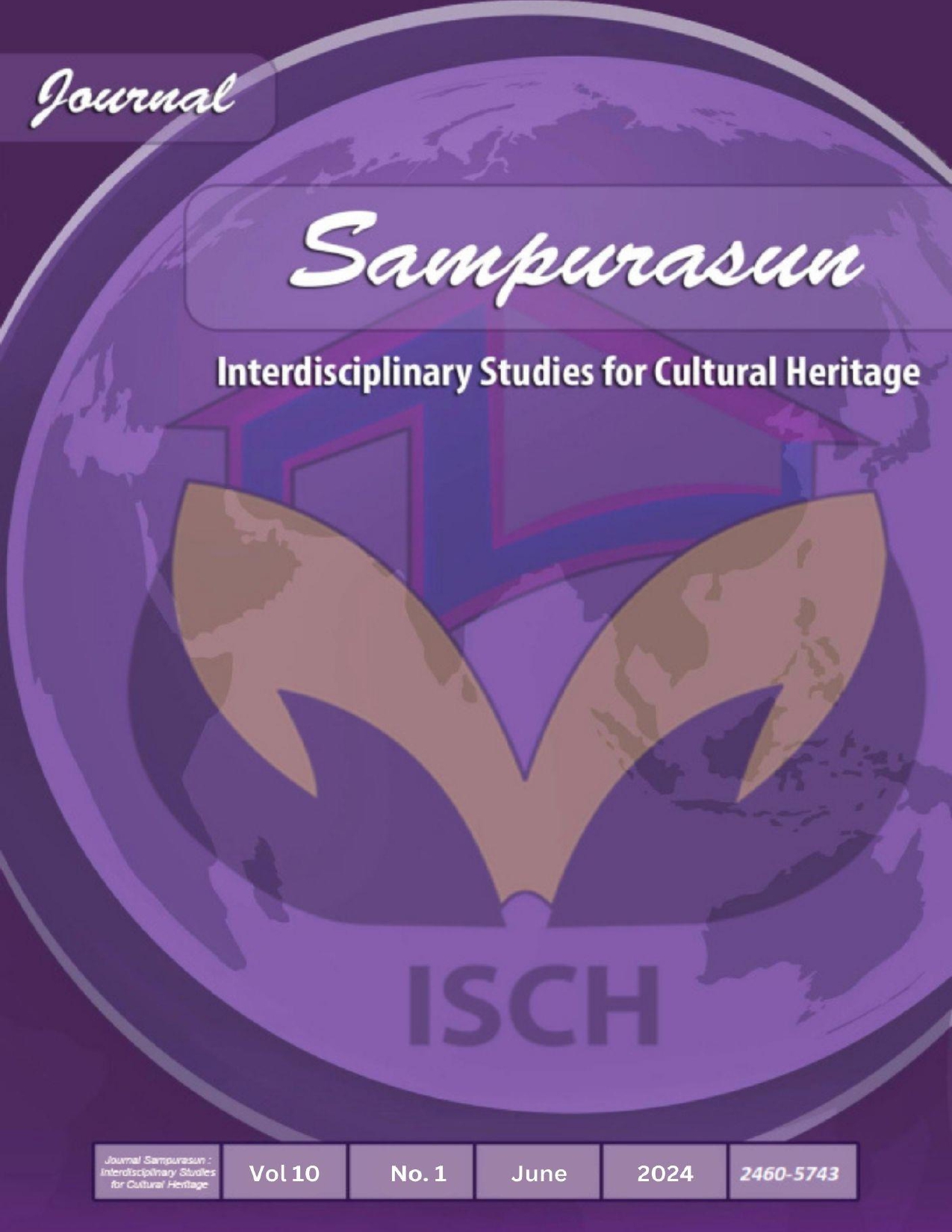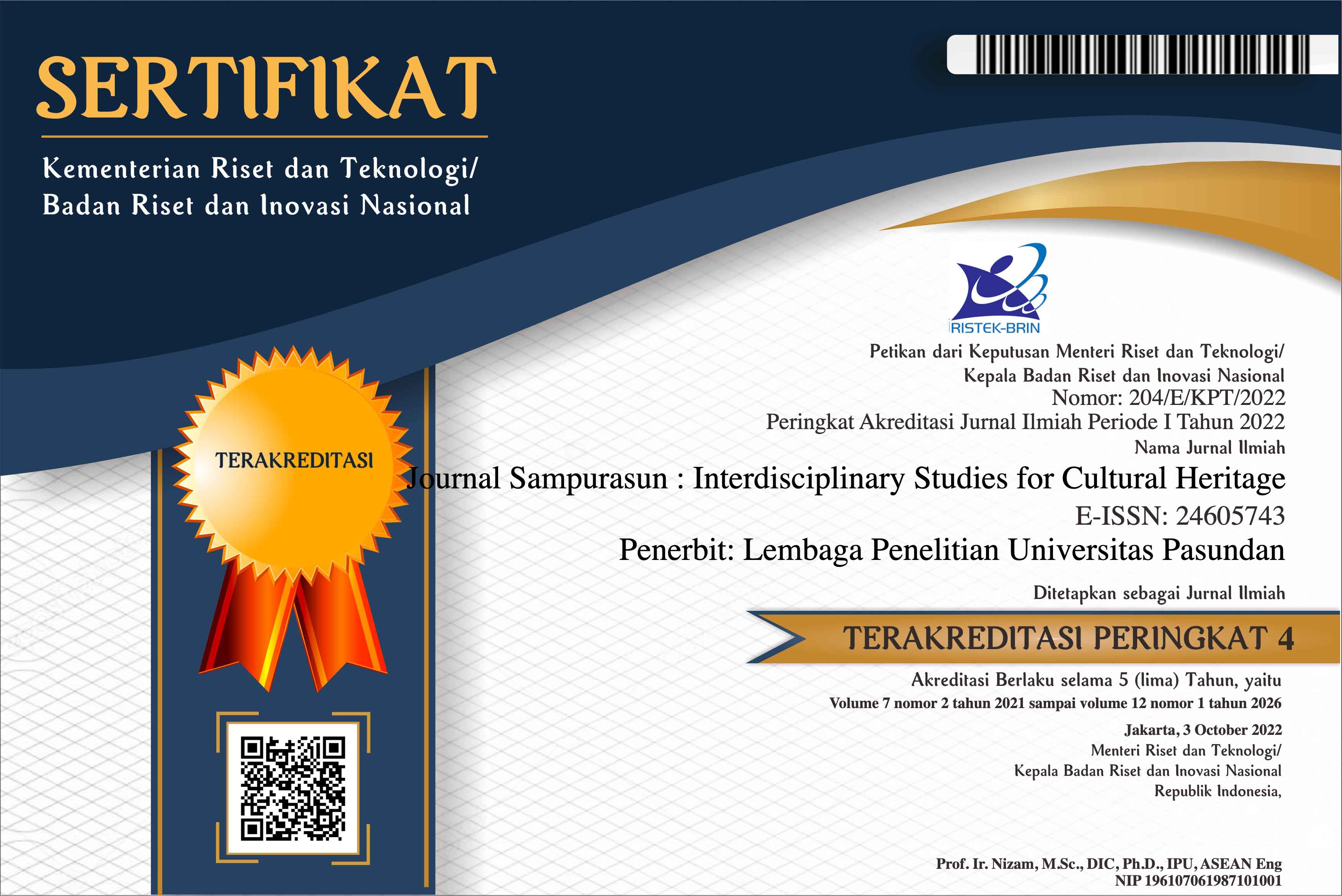TABOO WORDS IN 33 MINUTES OF CHRISS ROCK YOUTUBE VIDEO: SOCIOLINGUISTICS STUDY
DOI:
https://doi.org/10.23969/sampurasun.v10i1.13702Keywords:
Sociolinguistics, Taboo Words, Chris RockAbstract
This research aims to classify types of taboo words and analyze the function of taboo words in Chris Rock's 33-minute YouTube channel; This research aims to classify types of taboo words and analyze their functions in Chris Rock's 33-minute YouTube performance. The study is based on the theories of Batistella (2005) and Raymond D. Liedlich (1973). Using a qualitative descriptive method, the data was sourced from the Laugh Planet YouTube Channel. The findings reveal three types of taboo words: obscenity, epithet, and profanity. Specifically, there were 3 instances of obscenity (1.7%), 1 epithet (5%), and 1 profanity (5%). Additionally, four functions of taboo words were identified: creating attention, endearment, discredit, and providing catharsis. The analysis found 2 instances of creating attention (2.5%), 1 of endearment (5%), 1 of discredit (5%), and 1 of providing catharsis (5%). Among these, obscenity was the most frequently used type of taboo word, while creating attention emerged as the most common function. The study underscores the prevalence and diverse roles of taboo language in comedic performances, highlighting how such words are strategically employed to engage audiences, express affection, criticize, and release emotions. Chris Rock's skillful use of taboo language not only enhances his comedic impact but also reflects broader linguistic and social dynamics. This research contributes to a deeper understanding of the nuanced ways in which comedians use taboo words to connect with their audiences and convey complex messages, ultimately enriching the discourse on language and humor in contemporary media.
Downloads
References
Baldwin, John, et. al. Communication Theories for Everyday Life, Boston: Pearson, 2004.
Batistella, E.L. (2005). Bad Language: Are Some Words Better Than Others? New York: Oxford University Press.
Fromkin, V. (2005). An Introduction to Language. USA: Thompson Corporation.
Hazmi, M. Z. (2022). PENGGUNAAN KATA TABU DALAM TRENDING TOPIC MEDIA SOSIAL TWITTER: KAJIAN SOSIOLINGUISTIK (Doctoral dissertation, Program Studi S1 Bahasa Inggris, Universitas Widyatama).
Himawan, J. A., & Haryanto, S. (2021). Taboo Words In “A Few Less Man” Movie (2017) (Doctoral dissertation, Universitas Muhammadiyah Surakarta).
Holmes, J. 2013. An Introduction to Sociolinguistics (Fourth Edition). New York: Routledge.
Jay, Timothy, ‘The Utility and Ubiquity of Taboo Words’, Perspectives on Psychological Science, 4.2 (2009)
Legère, K. (1994). An introduction to sociolinguistics By Janet Holmes. Language, 70(3), 605-605.
Kusuma, G. A. W. (2013). The Function of Taboo Words and Their Expressions in Bad Boys Movie. Journal: English Department Faculty of Letters Udayana University, 8(2).
Mariyanto, I. K., Sulatra, I. K., & Ayomi, P. N. TYPES AND FUNCTIONS OF TABOO WORDS FOUND IN LIL DICKY’S SONG ON ALBUM PROFESSIONAL RAPPER.
Rahmayani, D. P., & Fitrawati, F. (2018). Analysis Types and Functions of Taboo Words in “The Wolf of Wall Street” Movie. English Language and Literature, 7(3).
Sari, Y. P. (2020). An Analysis of Types of Taboo Words in Parker Movie. Humanis, 24(3), 232-237.
Spolsky, Bernard, and Francis M. Hult, The Handbook of Educational Linguistics, The Handbook of Educational Linguistics, 2008
Yaqin, M. A. (2021). A SOCIOLINGUISTIC ANALYSIS OF TABOO WORD CHARACTER IN MILKMAN NOVEL: Sociolinguistics, Taboo, Milkman Novel. AESTHETICS: Jurnal Fakultas Sastra Universitas Gresik, 10(2), 5-11.
Downloads
Published
Issue
Section
License
Copyright (c) 2024 Journal Sampurasun : Interdisciplinary Studies for Cultural Heritage

This work is licensed under a Creative Commons Attribution 4.0 International License.
Copyright Notice
Authors should not withdraw their submitted papers because the withdrawal wastes voluntary works devoted by an associate editor and reviewers. But, we accept the withdrawal of a submitted paper if authors have unavoidable reasons. In the event that a manuscript is to be withdrawn from submission to Sampurasun Journal, a letter must be sent to the editorial office requesting withdrawal by e-mail (sampurasunjournal@unpas.ac.id) with its scanned PDF file, before the notification of acceptance for publication.
The withdraw request letter must include the following information. Paper ID, Paper title, Authors names, Reason why the paper must be withdrawn, and Date and signatures of all the authors (or signature of the contact author).
If only the contact author signs the letter, he/she must obtain the agreement of the withdrawal from all the other authors and the letter must include the description that all the other authors agreed the withdrawal. The journal will not withdraw a manuscript from peer review until such a letter has been received. Authors must not assume their manuscript has been withdrawn until they have received appropriate notification from the editorial office. Withdrawal of a manuscript subsequent to acceptance for publication will only be granted in the most exceptional of circumstances.
After the paper is accepted for publication, the withdrawal is not permitted in principle. The authors must always pay the charge even if the withdrawal is permitted. Any request of withdrawal that does not follow the above procedure is treated as invalid. If illegal submission, e.g., plagiarized or duplicate submission, is found for a paper, the withdrawal of the paper will never be permitted and the authors will be punished based on the rule. It is not acceptable practice to withdraw a manuscript in the event of acceptance at another journal. This constitutes dual submission. The editorial office of the other journal will be notified of your actions. In such circumstances Sampurasun ISCH may chose to impose appropriate punitive action subject.
Withdrawal Penalty
Author is not allowed to withdraw submitted manuscripts, because the withdrawal is waste of valuable resources that editors and referees spent a great deal of time processing submitted manuscript, money and works invested by the publisher. If author still requests withdrawal of his/her manuscript when the manuscript is still in the peer-reviewing process, author will be punished with paying $200 per manuscript, as withdrawal penalty to the publisher. However, it is unethical to withdraw a submitted manuscript from one journal if accepted by another journal. The withdrawal of manuscript after the manuscript is accepted for publication, author will be punished by paying US$500 per manuscript. Withdrawal of manuscript is only allowed after withdrawal penalty has been fully paid to the Publisher. If author don't agree to pay the penalty, the author and his/her affiliation will be blacklisted for publication in this journal. Even, his/her previously published articles will be removed from our online system.


















